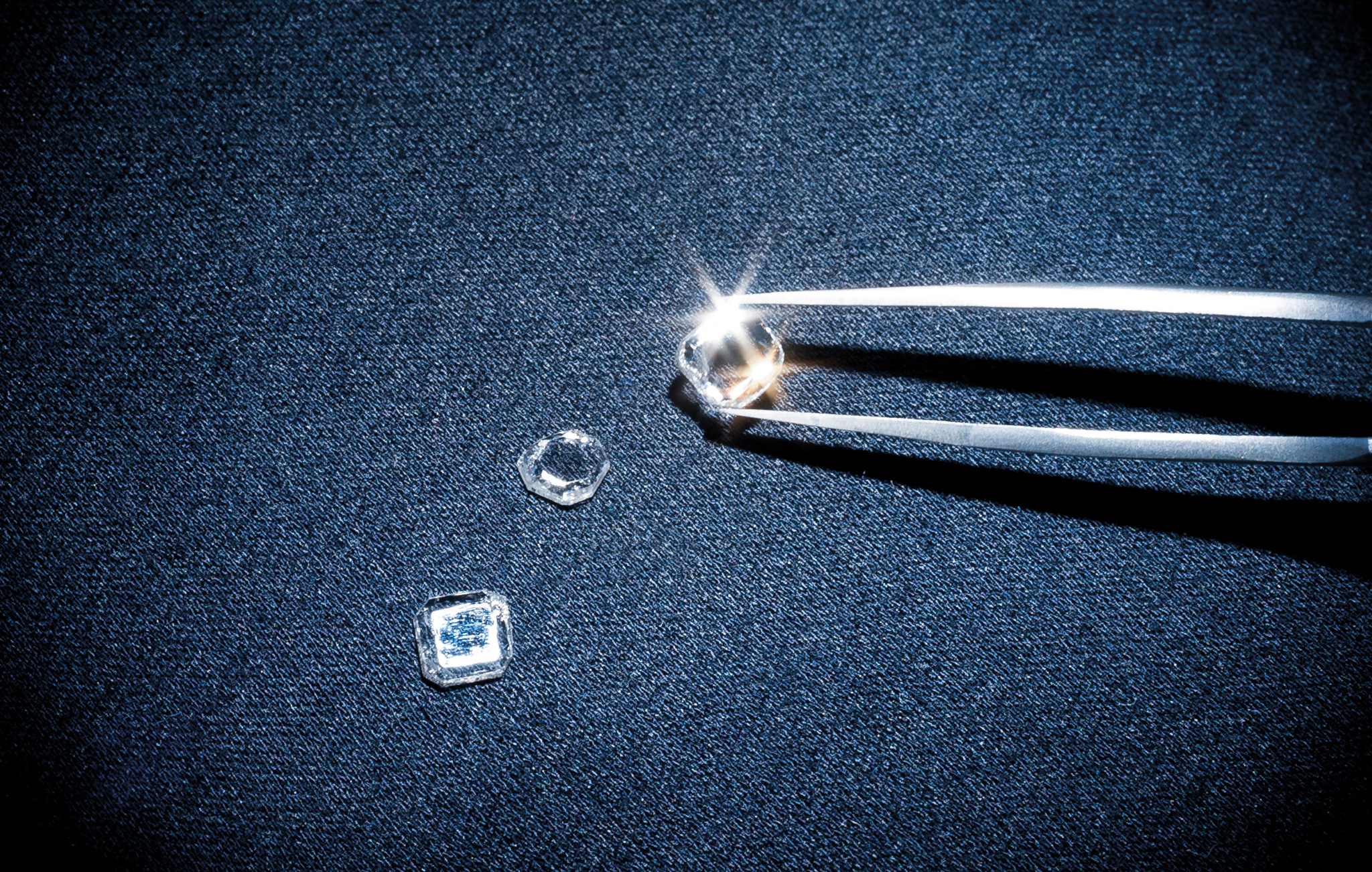Detecting cancer tissue more precisely and faster with nanodiamonds
The number of new cancer diagnoses has almost doubled in Germany since 1970 – making fast and precise diagnostic procedures even more crucial. This is why Fraunhofer IAF is working on diamond-based optimization of magnetic resonance imaging (MRI) for cancer diagnosis applications.


MRI is particularly gentle for patients because it works without any harmful chemicals or radioactive substances. Classic MRI uses magnetic fields to turn nuclear spin signals in the body’s water molecules into three-dimensional cross-sectional images. As part of the “Revolutionary Cancer Diagnosis with Diamond Technologies – DiaPol” project, the Fraunhofer Institute for Applied Solid State Physics IAF and several partners are working to improve this technology.
Polarization with nanodiamonds
Within DiaPol, Fraunhofer IAF is optimizing the process used to manufacture flexible and mobile polarizers out of nanodiamonds with nitrogen vacancy centers in order to hyperpolarize external molecules. This hyperpolarization process does not require low temperatures, which makes it particularly fast and cost-effective.
Revolution in cancer diagnosis
Before examination, the external molecules are injected into the patient. The MRI signal is amplified, which significantly improves picture quality. This makes it easier for the tumor cells to be more clearly differentiated from healthy tissue and also to identify the cancer cell’s exact stage. The time for patients to wait for their results is also reduced from several weeks to a few days, allowing for treatment to begin faster and giving patients and their loved ones certainty.
About the project:
As well as Fraunhofer IAF, DiaPol also involves the University of Ulm, NVision Technology GmbH, the Hebrew University of Jerusalem, and the Israeli Center of Diamond Technologies. The project is being funded by Germany’s Federal Ministry of Education and Research (BMBF).
Further information can be found at www.iaf.fraunhofer.de/en/media/ press-releases/nano-diamond.html
Last modified: